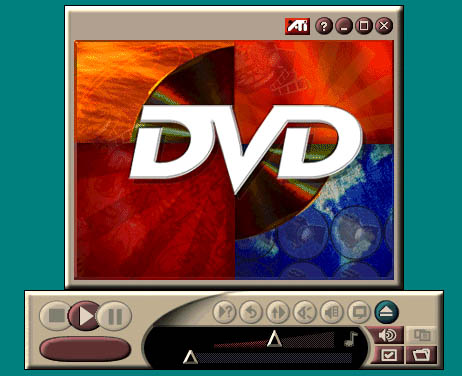Texture Compression (taken from our Rage Fury Pro Review)
When S3 first introduced support for S3TC the market was stunned by the potential that was seemingly just sitting there. Since that announcement, there hasn't been too much support for the standard, also known as DirectX Texture Compression (DXTC) which is natively supported in Direct3D and, through an extension, supported in OpenGL. However the support is growing and since the Rage 128 Pro supports DXTC with its 6 to 1 compression algorithm, you can add ATI to that list.
The Rage 128 Pro, like the original Rage 128, features support for textures of up to 2048 x 2048 pixels in size. Although there isn't a game that makes use of such a large texture, the texture sizes will continue to increase as games become more and more realistic. For this reason the chip's support for texture compression is definitely a move in the right direction. While it won't be the deciding factor in your buying decision it does help the industry move forward.
In this respect, texture compression can be equated with features such as hardware transforming & lighting or Environment Mapped Bump Mapping (EMBM). While they may not be features that are fully taken advantage of in current games, hardware support for them is a step forward for the industry as a whole. The ball must start rolling somewhere and once it does the entire industry benefits. It's refreshing to see ATI contribute to the industry by supporting DXTC and, as we already know, they aren't the only ones that have already pledged support for it. Even 3dfx, with their own texture compression algorithms, has already announced support for DXTC in their upcoming next generation product.
DVD Decoding
Since the original Rage 128 chip, ATI has been a leader in DVD decoding on a single 2D/3D card. Their secret? The addition of Inverse Discrete Cosine Transform, or iDCT for short, support in hardware. iDCT is simply a part of the MPEG-2 decoding process, the standard by which DVD are encoded. By offloading this function to the graphics card, the CPU is free to perform other tasks. ATI is the only graphics maker to support iDCT in hardware on something other than a dedicated MPEG-2 decoder card.

The next key to ATI's infamous DVD support is hardware support for DVD subpicture. DVD subpicture is a very commonly used feature that allows you to display graphics over video such as subtitles or menu features, both of which are commonly used in DVD movies.
In order to place a subpicture over a DVD stream, the subpicture (a compressed bitmap) is decompressed and outputted to the screen on the fly. While this isn't the most CPU intensive part of playing back a DVD, it does contribute to some of the CPU load associated with DVD playback where there is excessive use of the subpicture feature. Performing this in hardware allows for the decompression of the subpicture on the fly as it sends it to the DAC for output. This only reduces memory bandwidth and CPU utilization by a small percentage but it does help. However, without support for DVD subpicture in hardware, you get a dithered approximation of the image that is supposed to be translucent.

The Rage 128 series also has built in hardware motion compensation, filtered XY scaling, etc. just like virtually every other card on the market today. All this combined helps to ensure a constant frame rate, even on lower end systems, with virtually no dropped frames. Not to mention quality that rivals stand alone DVD players.
Of course, with the Rage Fury MAXX, there's no TV output, so you'll be stuck watching those DVD movies on your monitor. It's really too bad because the quality is quite good, especially if it were teamed with the TV-out of the Rage Theater chip used on the Rage Fury Pro.










0 Comments
View All Comments